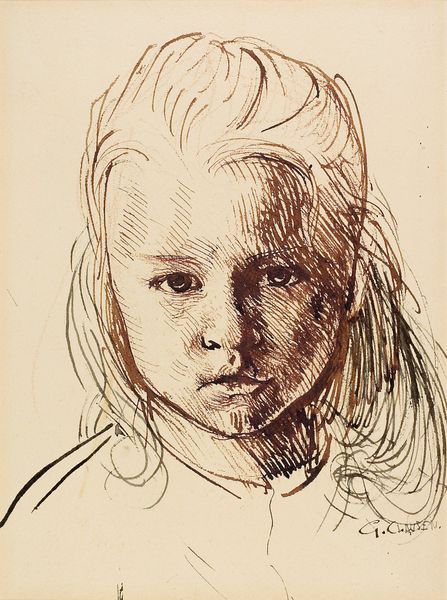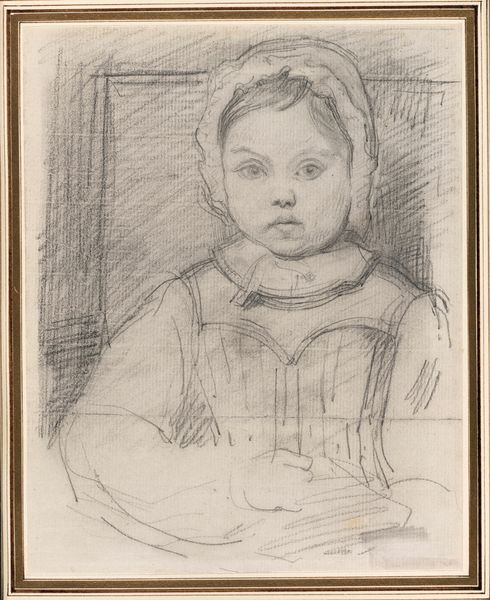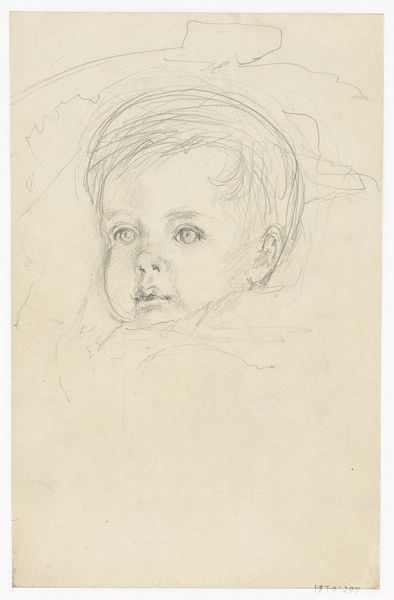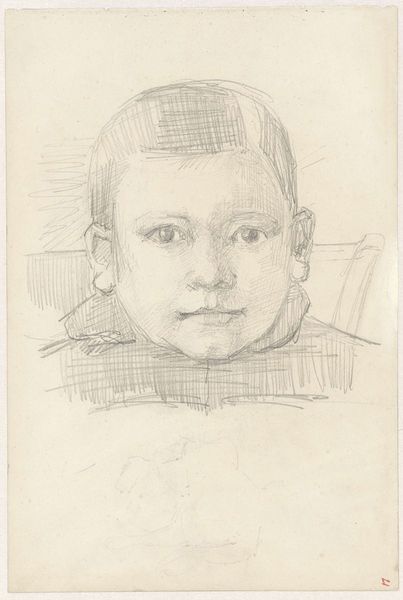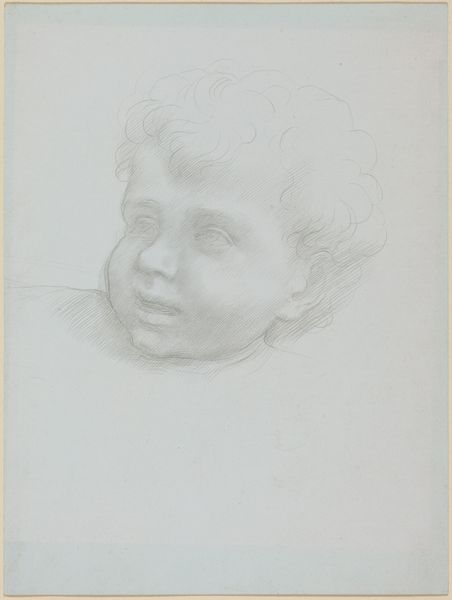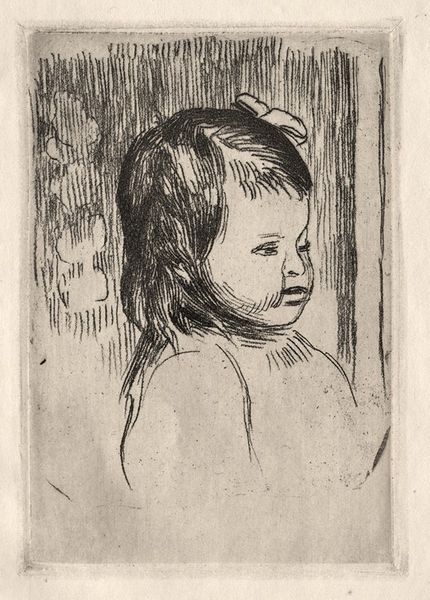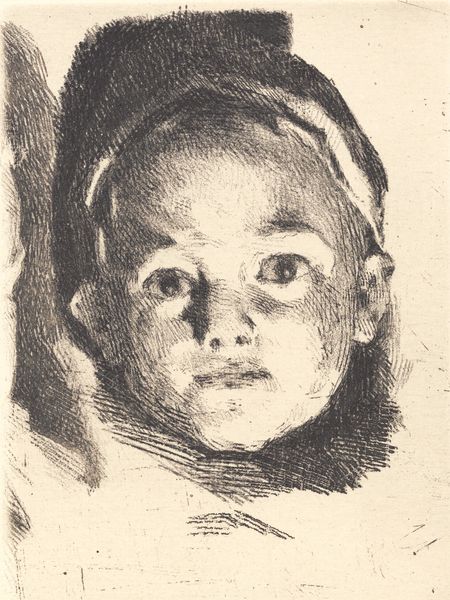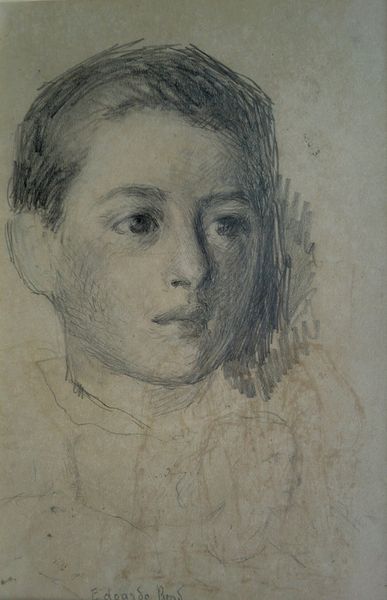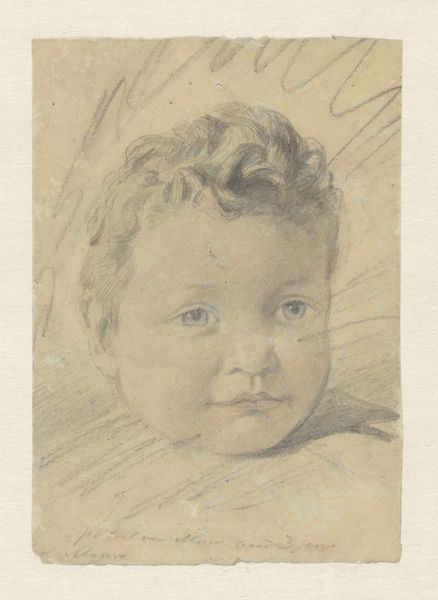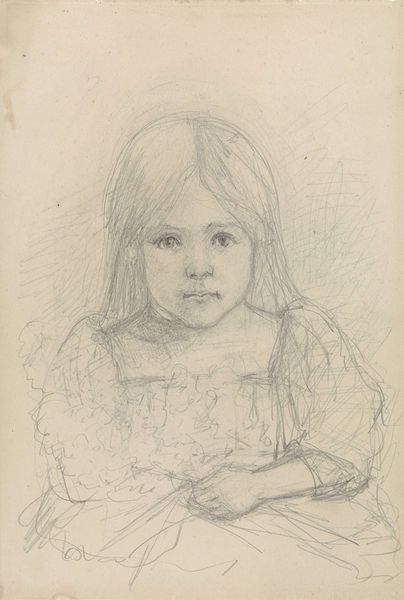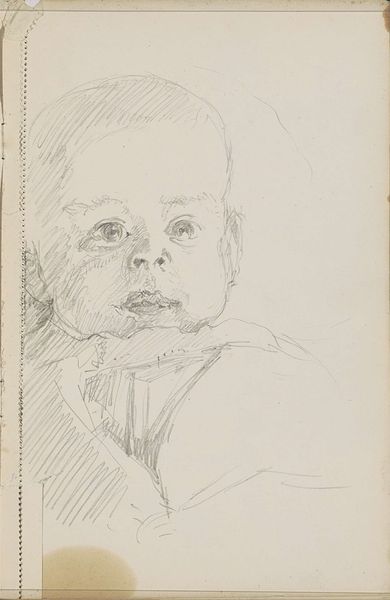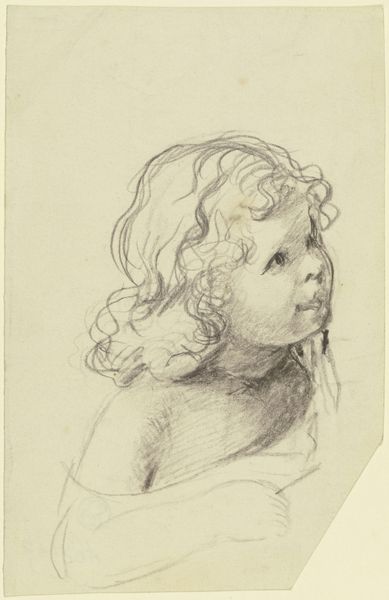
Copyright: Public domain
John Ruskin rendered this study of a boy's head using pencil and watercolor, sometime in the 19th century. Ruskin was famously interested in the craft of the Old Masters. You see that interest here, in the very direct way he’s tried to get at the essence of a work by the Renaissance artist Veronese, not just copying it, but trying to recapture the spirit of its making. Ruskin uses the pencil to make a preliminary sketch that seems to capture the form of the face and the direction of the gaze with quick gestures, only to then go over it with a brush, adding tonal modulations. The translucent quality of the watercolor gives a subtle depth and form to the face of the child. This way of working can be understood in relation to Ruskin's broader view of art, in which the artist's hand and sensitivity to material were paramount. For him, art was never about mere representation, but rather an expression of the maker's engagement with their materials. This drawing embodies the qualities Ruskin admired most: careful observation and skilled execution.
Comments
No comments
Be the first to comment and join the conversation on the ultimate creative platform.
